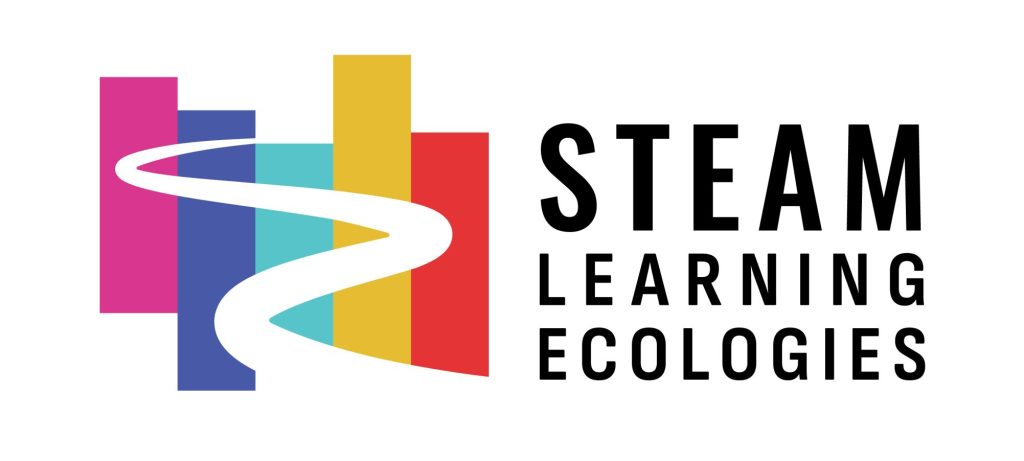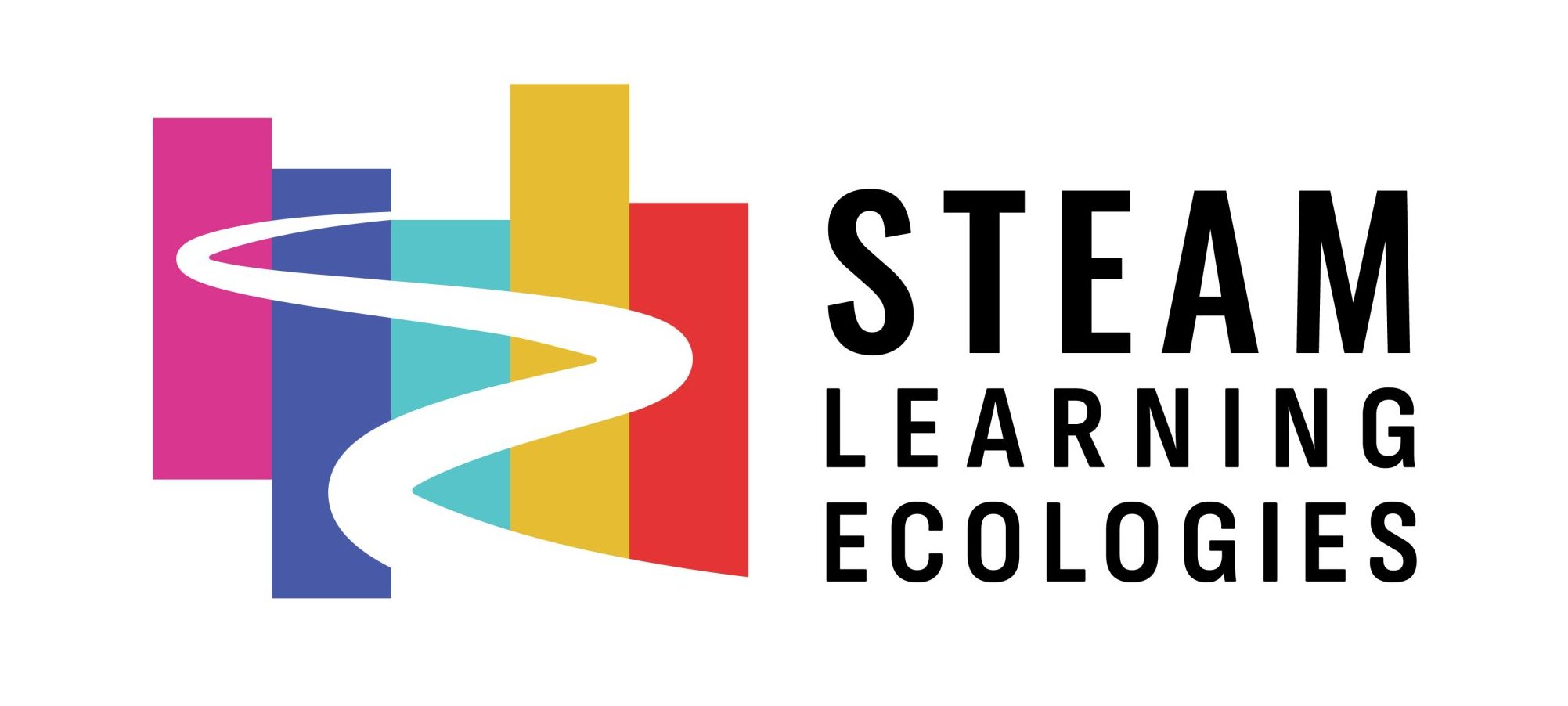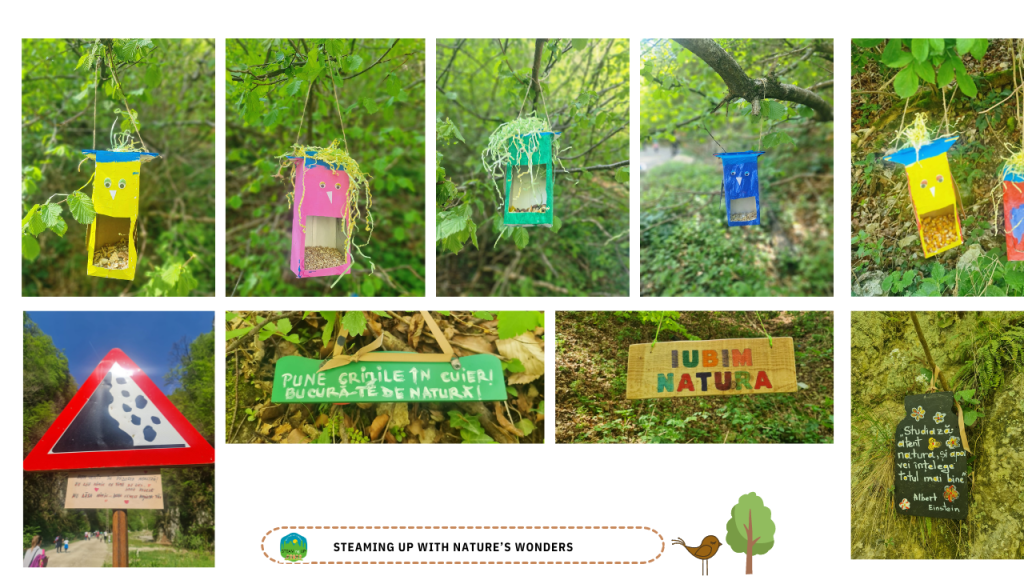The Pilot STE(A)M Learning Ecology (SLE) in Romania aimed to raise awareness of the importance of natural habitats for students aged 6 to 7 years old through dedicated activities in collaboration with the Buila Vanturarita National Park. Pupils explored its flora and fauna through sensory and inquiring-based approaches, supported by the national experts and the insightful materials provided by the Park authorities!
To learn more about this learning ecology, read the interview we conducted with Ms Elena Rogoveanu, a school teacher from a school in Ramnicu Valcea, Romania!
Can you “paint a picture” of the context in which your STE(A)M Learning Ecology operates? Describe a bit the local setting where the SLE is located as well as the real life challenge it addresses. How does it link to the school curriculum?
Set within the scenic landscapes of Buila Vânturarița National Park, an area included in the NATURA 2000 network, “STEAMing UP with Nature’s Wonders” aimed to address the growing disconnection from the natural world among children, reigniting their bond with nature and fostering STEAM skills. The project adapted to the urban environment, in which Mircea cel Bătrân National College is located, by finding creative ways to bring nature into the classroom and using the region’s natural resources as an extended learning environment. Guided by experts, students explored the park’s rich biodiversity through sensory exploration and inquiry-based approaches, including activities such as workshops, investigations of seasonal changes, outdoor mindfulness walks, expert interviews, field trips, and awareness events. The project’s topics and activities aligned with the content and skills specified in the school curriculum and directly corresponded to its requirements!
Could you briefly present the stakeholders involved in this SLE? Their roles and the interactions occurred to reach out and actively engage them. Did you already know them, or you reached out to new ones?
Our SLEs established a network of stakeholders involved in enhancing students’ educational experiences and fostering a meaningful connection to nature and STEAM subjects. Teachers from STEM disciplines (Biology, Physics, and Chemistry) facilitated learning experiences related to various aspects of the project. Parents were encouraged to reinforce learning at home and participate in selected project activities. Their involvement strengthened the home-school connection and supported students’ understanding and appreciation of nature. Experts such as local environmental scientist, ecologists and naturalists provided their expertise and guidance related to park’s biodiversity and environmental issues, during field trips, workshops, and other project activities. A great impact on students’ awareness and connection with the nature had the mindfulness sessions organized in collaboration with a yoga instructor. Collaborating with NGOs allowed access to resources and support, and facilitated educational opportunities that might not otherwise be available, enriching the project’s impact and scope. All the stakeholders were new collaborators that we reached out specifically for their expertise and resources related to environmental education and STEAM activities.
Have you already worked in similar open schooling projects in the past? If not, how was this first experience?
I have previously been involved in open schooling projects, but this experience has been quite different. The STEAM Learning Ecology approach was, in my view, the driving force behind the project, enabling me as a teacher to create a structured plan for activities and establish connections with formal, non-formal, and informal stakeholders and create educational synergies within its framework. With this initiative, I had the opportunity to explore innovative educational methods that integrate nature-based learning and STEAM disciplines. It also gave the students the chance to take different learning paths. Collaborating with diverse stakeholders such as educators, experts, and parents has not only broadened my perspective but also enriched the learning experiences of the children. As for the students, witnessing their curiosity, critical thinking, and excitement during hands-on exploration of Buila-Vânturarița National Park has been incredibly fulfilling. Seeing them collaborate with their parents to develop solutions aimed at protecting and raising awareness in the community has given me confidence that this learning experience will continue to positively impact them throughout their lives.
Were there any challenges occurred while implementing the STE(A)M Learning Ecology and/or interacting with the relevant stakeholders? How did you address them?
Challenges are always opportunities for growth and transformation. Addressing time constraints and aligning stakeholders’ schedules with the school program was a significant challenge. As a result, some stakeholders couldn’t be as involved in the activities as initially planned. Additionally, part of the activities required an outdoor setting, and we had to reschedule some due to the weather. Regarding the cost of materials and resources, not all stakeholders were able to provide their expertise free of charge. However, this issue was resolved through the involvement of parents.
Why do you think that your STE(A)M Learning Ecology was so helpful? What are the benefits and the added value brought to your community? What are the benefits and added value brought to the educational experience of students/teachers involved? Please think about the skills developed.
Our SLE brought the community together, creating a strong network of collaboration and learning. The project increased appreciation for local biodiversity and conservation efforts, inspiring community members to actively participate in preserving and value their natural surroundings. This engagement not only enriched the community’s connection to nature but also strengthened the relationships between schools, families, and local organizations. For students, the project represented an exciting and interactive learning environment beyond the classroom. Hands-on activities and field trips to Buila Vânturarița National Park helped students develop critical thinking, problem-solving, and observational skills. Integrating nature-based learning with STEAM subjects showed students how different subjects are connected and how to apply their knowledge in real-world situations. Working on activities with peers and experts also improved their communication, teamwork, and leadership skills. Collaborating with various stakeholders gave me fresh ideas and resources for integrating STEAM subjects and nature-based learning into my lessons. I am more confident now in searching for support and guidance and I have that feeling that I am not alone in teaching, and I can always involve stakeholders as co-authors of the educational instruction.
How do you think that your STE(A)M Learning Ecology engaged and attracted learners to opportunities in science-related fields, in particular young females?
By involving students in hands-on activities such as STEAM workshops, field trips, and investigations of seasonal changes, the project made science tangible and relevant, opening the window of learning and discovering science through play. This approach helped young students see the direct impact of science in the real world, making it more appealing and accessible. Activities included creating models of the water cycle, exploring different habitats, and conducting experiments related to natural phenomena to help students understand various scientific concepts. Regarding the involvement of young females, I believe it is important at this age for students to simply enjoy and engage with STEM activities. They need to see that science is for everyone, and anyone, no matter their gender or background, can have a career in science.
Looking ahead, do you plan to further collaborate with the various stakeholders involved? Do you envisage to further sustain this SLE in the near/ long future?
The SLEs project will continue this year with a stronger focus on STEAM, particularly on environmental issues. We will explore topics such as climate change, biodiversity loss, and pollution, encouraging students to develop solutions and raise awareness in their community. The stakeholders who participated in the first edition of the project and offered their expertise in all the phases of the project will again be actively involved in these activities, ensuring continuity and sustained collaboration.
Any additional comment and/or suggestion to improve the methodology and the implementation of SLEs is welcome!
Based on my experience, I suggest that SLEs should incorporate more flexible scheduling of activities to accommodate weather conditions and unforeseen events. Extending the project timeline closer to the end of the school year could provide additional flexibility. Enhancing visibility and recognition for stakeholders involved could boost their active participation. Offering ongoing professional development for teachers focused on implementing SLE methodologies with a strong emphasis on educational strategies would further improve the effectiveness of these projects.




